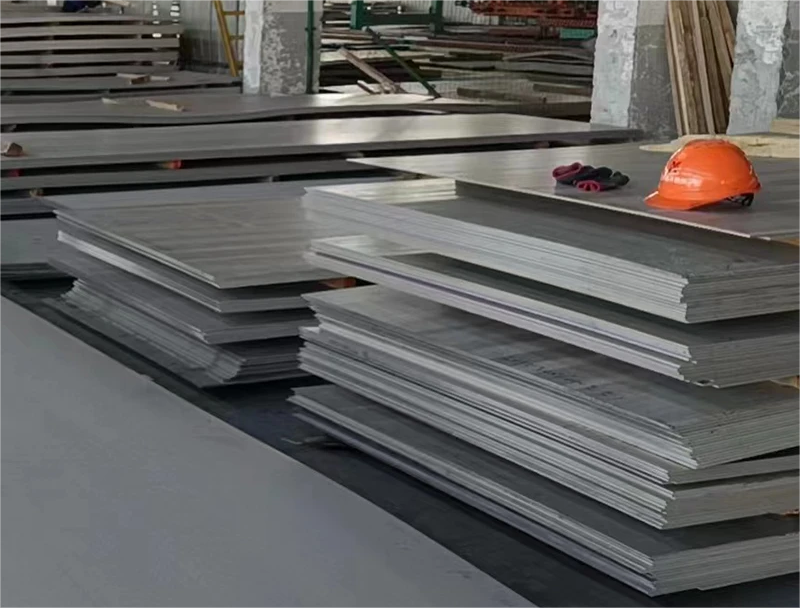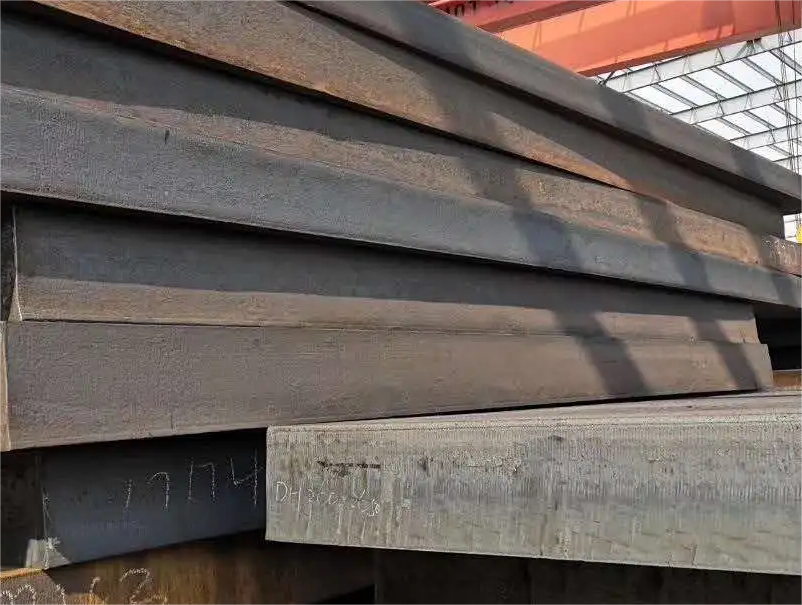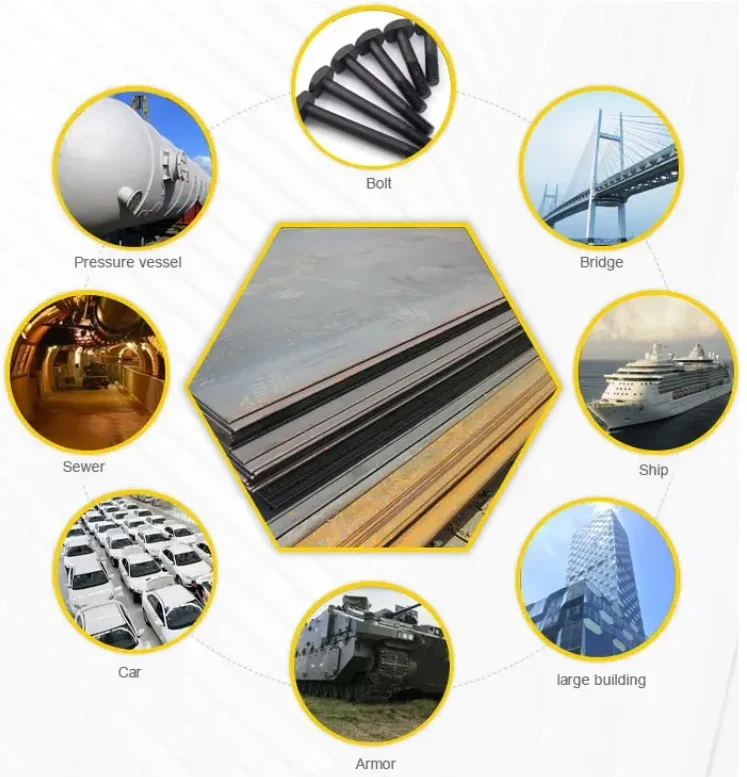ASTM A737 steel plates are employed in the fabrication of pipes and the construction of pressure vessels. These plates are crafted from high-strength, low-alloy steel and comprise two grades: Grade B [Minimum Yield Strength of 345 MPa] and Grade C [Minimum Yield Strength of 415 MPa].
The plates' maximum thickness is determined by the chemical composition and heat treatment's ability to meet the specified mechanical property requirements. Although there is no strict limitation, common practice typically restricts the maximum thickness to 4 inches [100 mm] for each grade.
Delivery State The as-rolled condition of ASTM A737 grade C exhibits sensitivity to cracking during flame cutting, transit, and handling, especially for thicknesses exceeding 2 inches [50 mm]. Plates should not be solely shipped in the as-rolled condition unless mutually agreed upon by the manufacturer and the purchaser.

References ASTM Standards
- A20/A20M: General Requirements for steel plates used in pressure vessels.
- A435/A435M: Straight-beam Ultrasonic Examination of steel plates.
- A577/A577M: Ultrasonic Testing of angle-beam on steel plates.
- A578/A578M: Straight-beam Ultrasonic Testing examination of rolled steel plates for special applications.
General Conditions and Ordering Details
Material supplied under this specification must adhere to the specifications outlined in Specification A20/A20M. These specifications encompass testing and retesting methods and procedures, acceptable variations in dimensions and mass, quality standards, defect rectification, marking procedures, loading specifications, and ordering details.
In addition to the fundamental requirements of this specification, supplementary requirements are available for situations requiring extra control, testing, or examination to meet specific end-use criteria. The purchaser is directed to refer to the supplementary requirements listed in this specification and the detailed requirements in Specification A20/A20M.
In cases where the requirements of this specification conflict with those of Specification A20/A20M, the requirements of this specification shall take precedence.

Manufacturing Process:
The steel specified in ASTM A737 must undergo a killing process and meet the fine austenitic grain size requirement outlined in Specification A20/A20M.
Heat Treatment: The material is required to undergo normalization through thermal heating to achieve an austenitic structure, not exceeding 1700°F [925°C]. This involves holding the material at the proper temperature for sufficient time to ensure uniform heat distribution, followed by air cooling.
Upon buyer approval, faster cooling rates than air cooling are permissible for enhancing strength or toughness, provided the plates are subsequently tempered within the temperature range of 1100 to 1300°F [595 to 705°C].
If the manufacturer opts for two heat treatment options, plates conforming to grade C must be normalized within the range of 1650 to 1850°F [900 to 1010°C] prior to shipment for plates exceeding 50 mm [2 inches] in thickness, unless otherwise agreed upon.

Chemical Composition Specifications for ASTM A737 Grade B, C Plates
The steel must meet the specified chemical composition requirements outlined in the table, unless alterations are made in accordance with Supplementary Requirement S17, which pertains to Vacuum Carbon-Deoxidized Steel, as specified in Specification A20/A20M.
| Chemical Requirements | ||||
|---|---|---|---|---|
| Elment | Composition, % | |||
| Grade B | Grade C | |||
| Heat | Product | Heat | Product | |
| Carbon, max | 0.2 | 0.22 | 0.22 | 0.24 |
| Manganese | 1.15-1.50 A | 1.07-1.652 A | 1.15-1.50 | 1.07-1.62 |
| Phosphorus, max | 0.025 | 0.025 | 0.025 | 0.025 |
| Sulfur, max | 0.025 | 0.025 | 0.025 | 0.025 |
| Silicon | 0.15-0.50 | 0.10-0.55 | 0.15-0.50 | 0.10-0.55 |
| Vanadium | ... | ... | 0.04-0.11 | 0.03-0.12 |
| Columbium, max | 0.05 | 0.05 | 0.05 | 0.05 |
| Nitrogen | ... | ... | 0.03 | 0.03 |
For nominal plate thicknesses of 3/4 in. [20 mm] and below, when assessing elongation requirements within 2 in. [50 mm], a 1 1/2 in. [40 mm] wide rectangular specimen may be employed for the tension test. Elongation measurements can be determined in a 2 in. [50 mm] gage length, inclusive of the fracture, to identify the maximum elongation.
| Tensile Requirements | ||
|---|---|---|
| | Grade B | Grade C |
| Yield strength, min, ksi [MPa] | 50 [345] | 60 [415] |
| Tensile strength, ksi [MPa] | 70-90 [485-620] | 80-100 [550-690] |
| Elongation in 8 in. [200 mm], min, % A | 18 | 18 |
| Elongation in 2 in. [50 mm], min, % A | 23 | 23 |
A See Specification A20/A20M for elongation adjustment.








